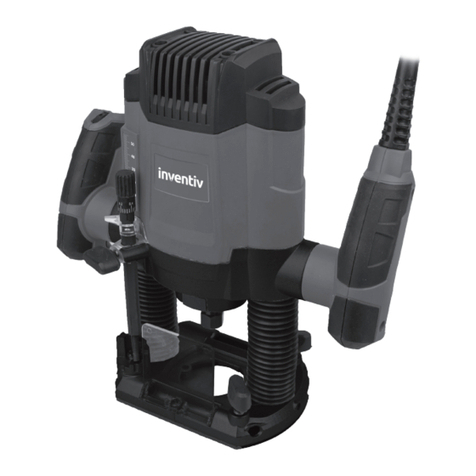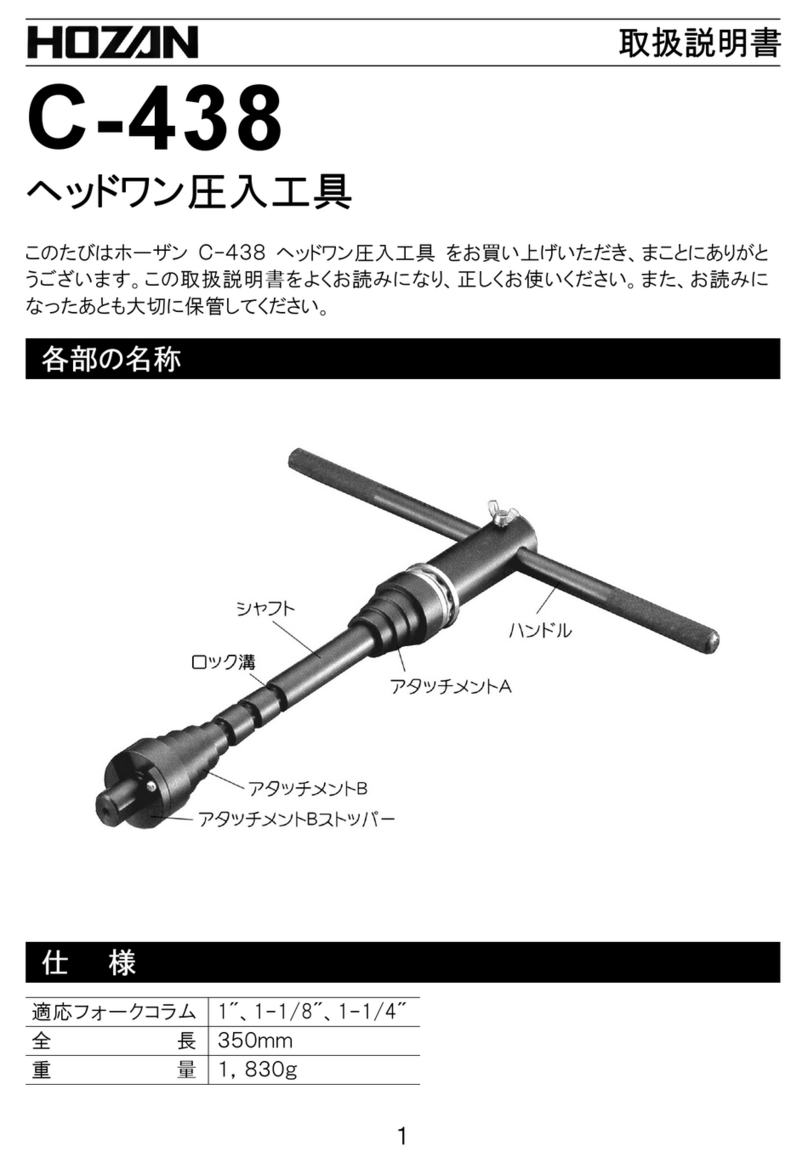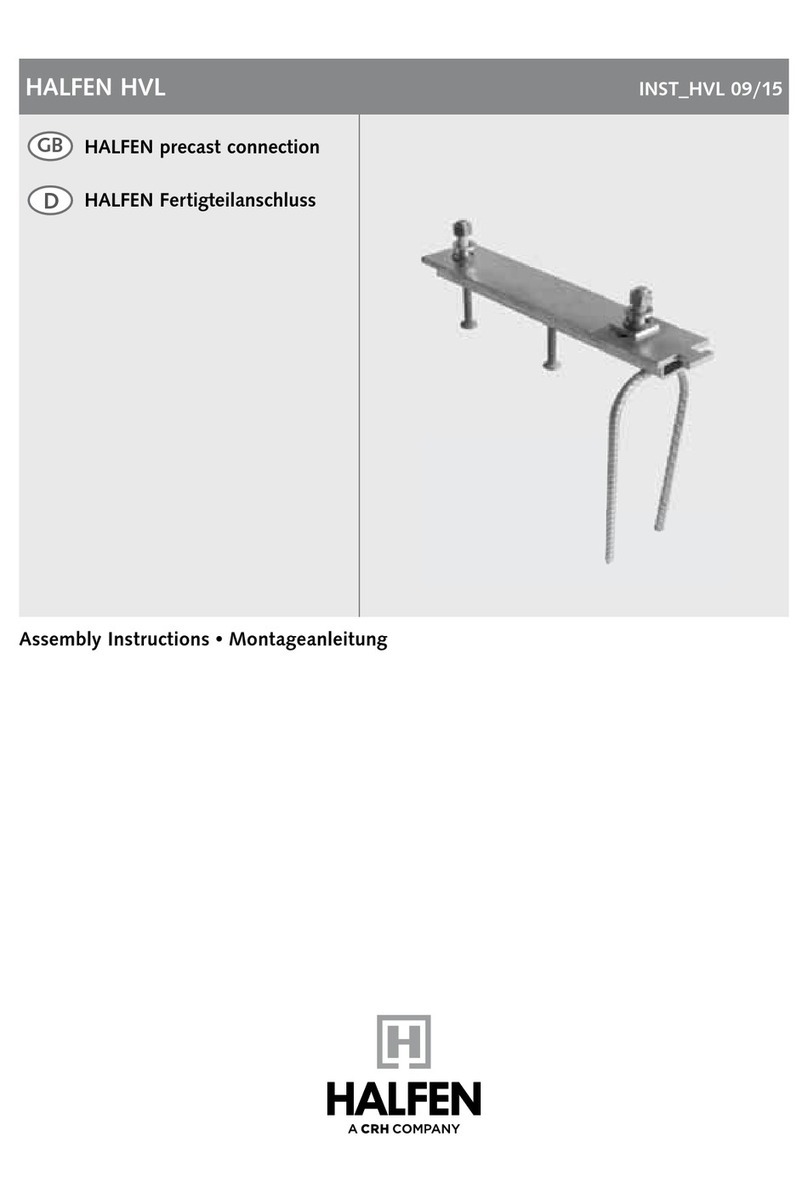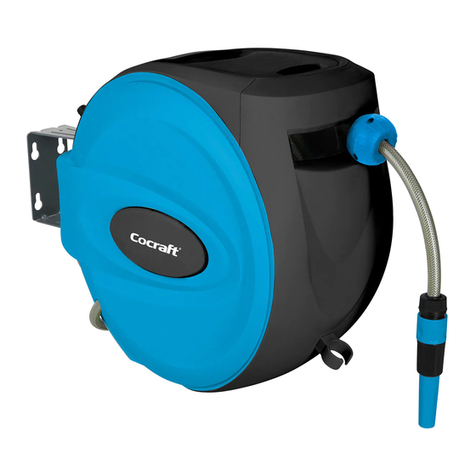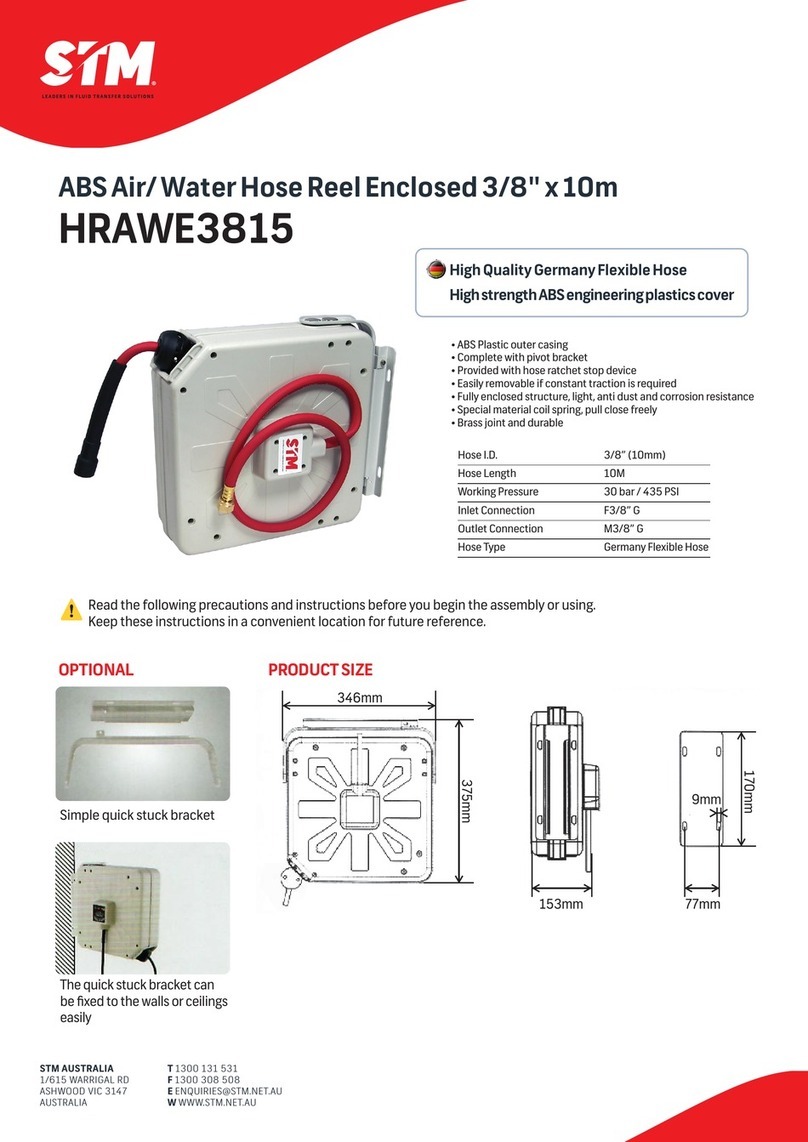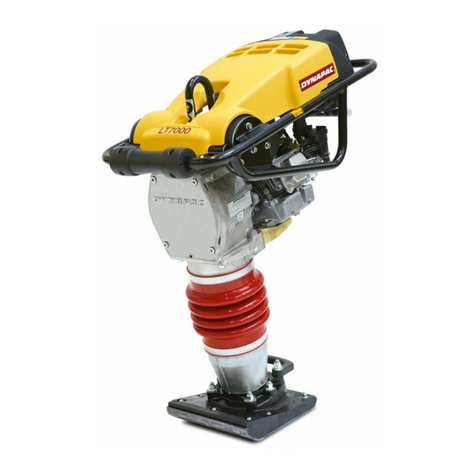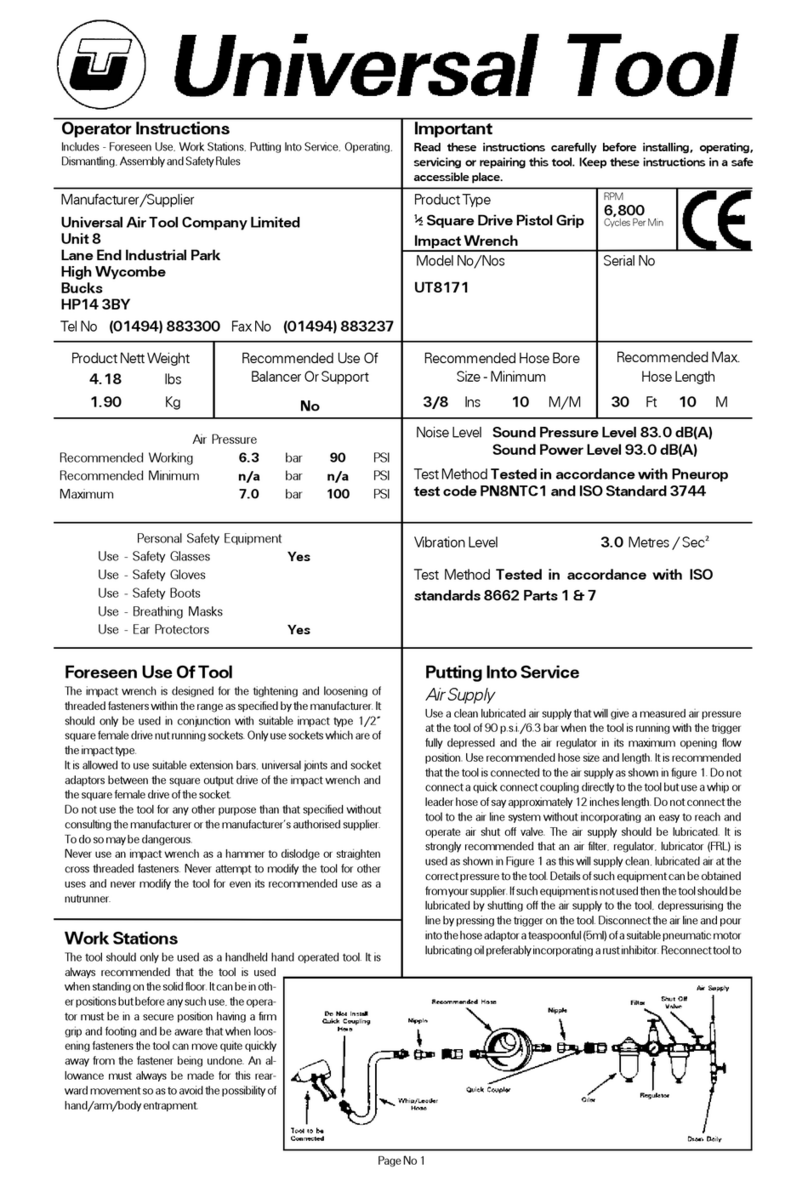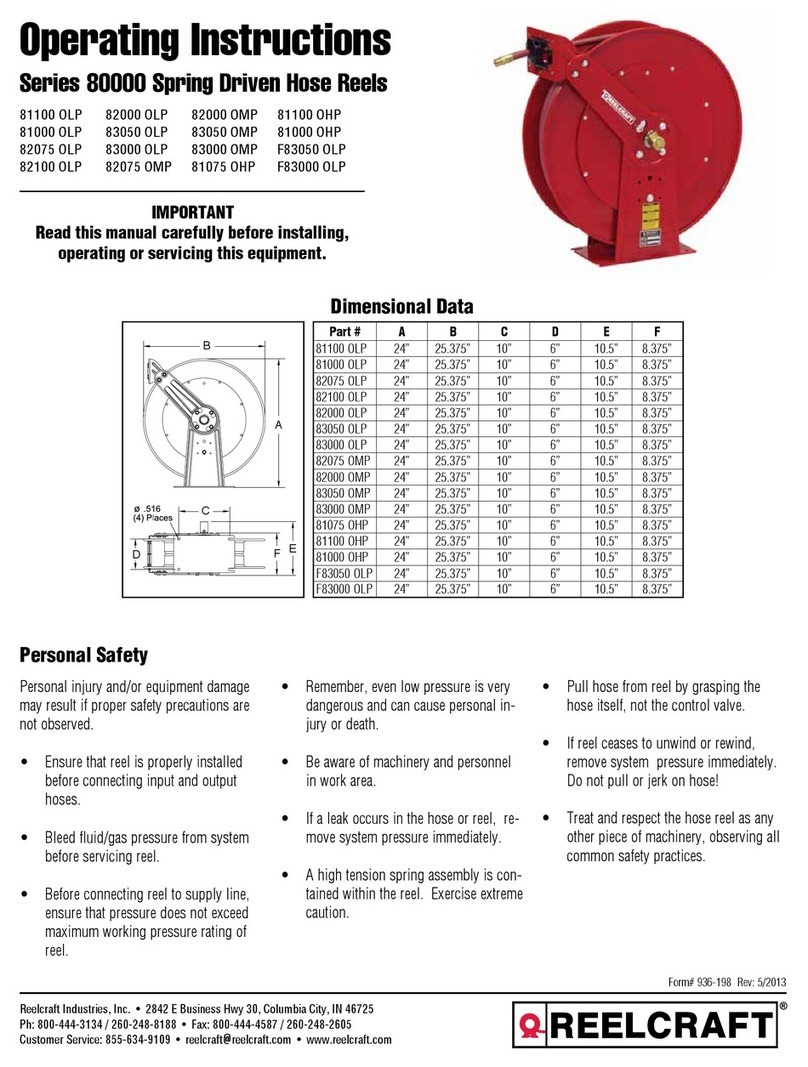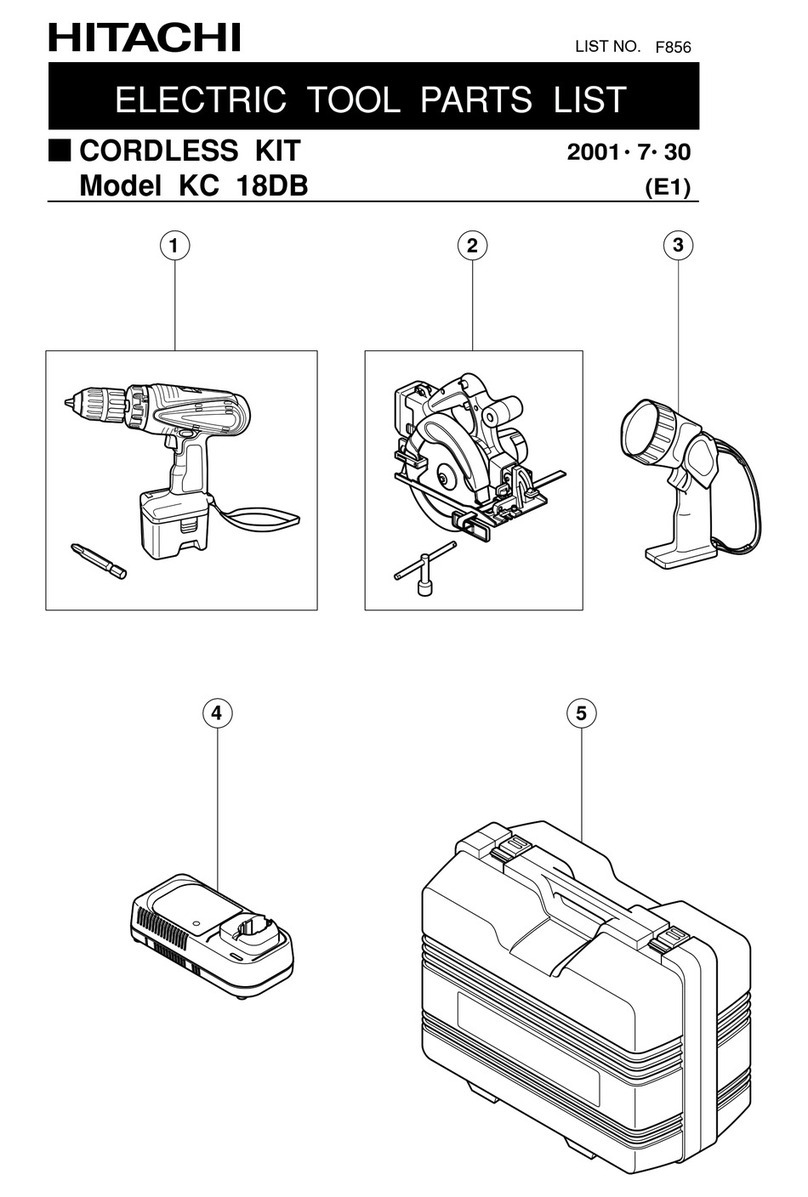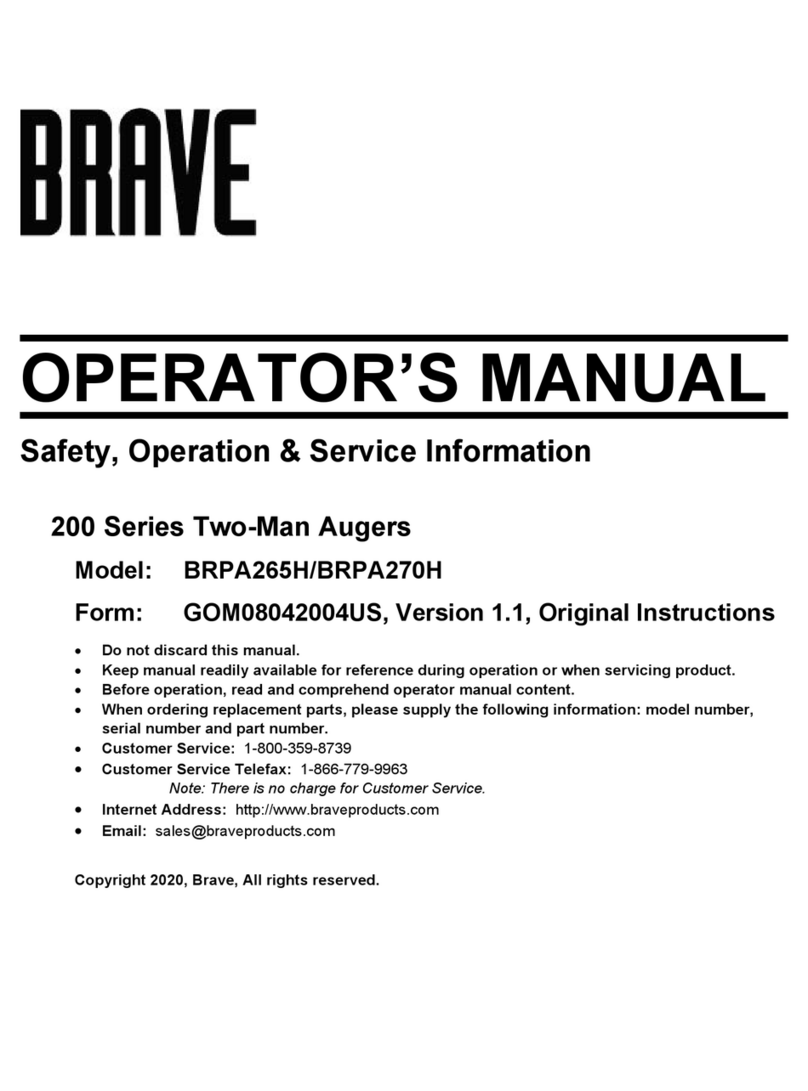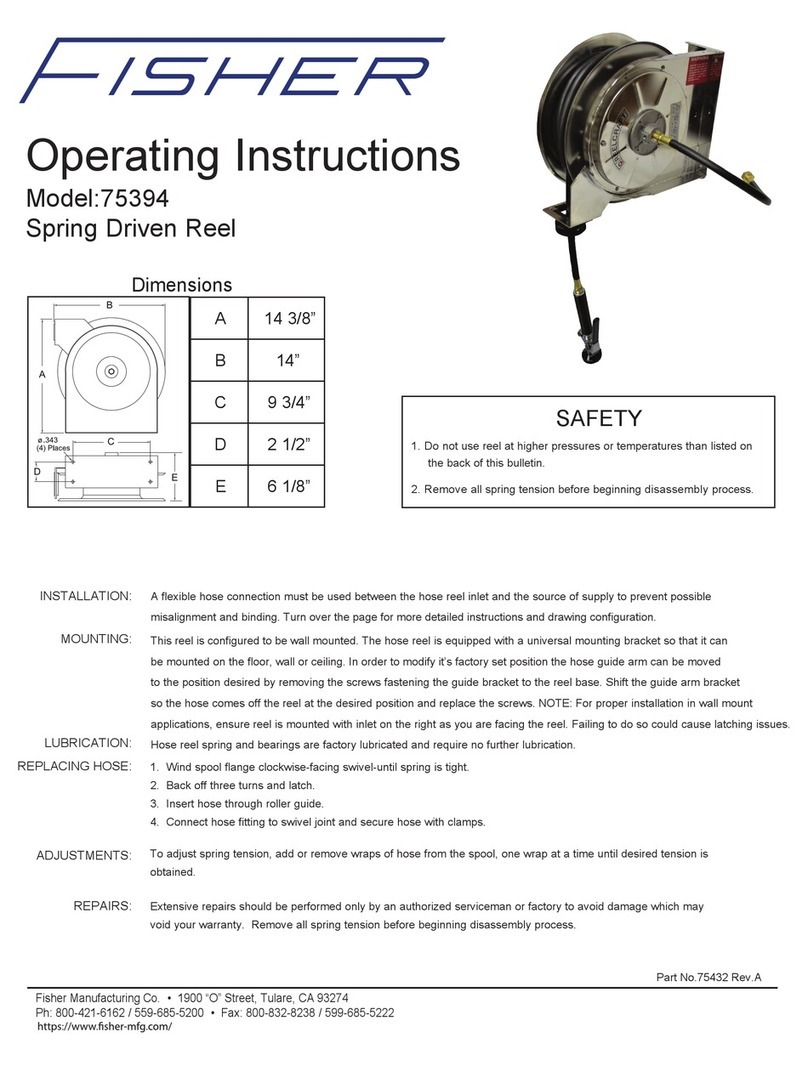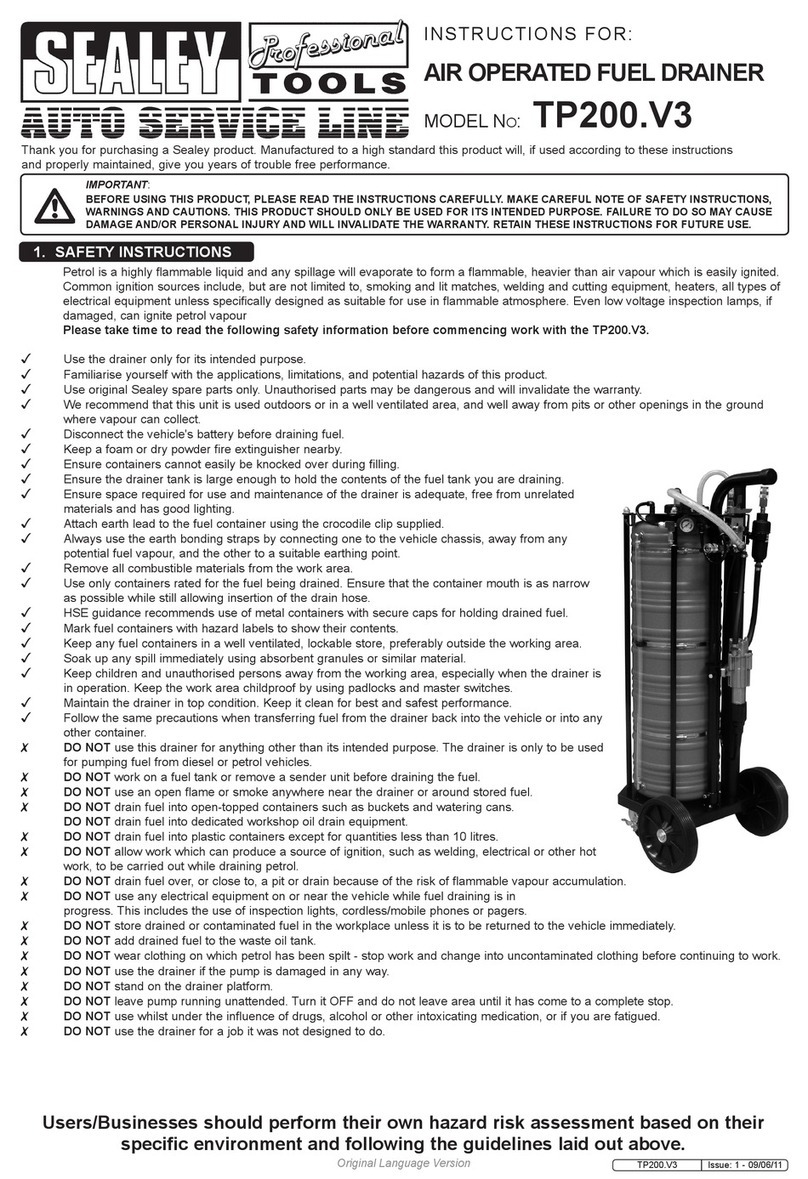FLIGHT DESIGN CTSW User manual

Flight Design
AIRCRAFT OPERATING INSTRUCTIONS
CTSW
(CTSW / CTSW-2006 / CTSW Classic / CTSW Advanced)
SERIAL NUMBER:
THIS DOCUMENT AND THE TECHNICAL DATA HEREON DISCLOSED ARE PROPRIETARY TO FLIGHT DESIGN AND SHALL
NOT BE USED, RELEASED, OR DISCLOSED IN WHOLE OR IN PART WITHOUT EXPRESS WRITTEN PERMISSION FROM
FLIGHT DESIGN

Aircraft Type: CTSW
FLIGHT DESIGN Aircraft Operating Instructions Page: ii
AU 010 01000
Rev. No: 7 Original Issue Date: 28-Feb-2005
Revision Date: 29-Apr-2008
Record of Revisions
Revision Number Revision Date Approved
Original Issue 28-Feb-2005
1 20-Jul-2005
2 05-Oct-2005
3 05-Apr-2006
4 05-Dec-2006
5 30-Dec-2006
5a 16-Apr-2007
5b 13-Jul-2007
6 01-Apr-2008
7 29-Apr-2008
List of Effective Pages
Chapter Page Revision
Chapter 1 iii 7
iv 7
Chapter 2 2-1 7
2-2 7
2-3 7
2-4 7
Chapter 3 3-1 7
3-2 7
3-3 7
3-4 7
3-5 7
3-7 7
3-7 7
3-8 7
3-9 7
Chapter 4 4-1 7
4-2 7
4-3 7
4-4 7
Chapter 5 5-1 7
5-2 7
Chapter 6 6-1 7
6-2 7
Chapter 7 7-1 7
7-2 7
7-3 7
7-4 7
Chapter 8 8-1 7
8-2 7
8-3 7
8-4 7
8-5 7
8-6 7
8-7 7
Chapter Page Revision
Chapter 9 9-1 7
9-2 7
9-3 7
Chapter 10 10-1 7
10-2 7
10-3 7
10-4 7
Chapter 11 11-1 7
11-2 7
Chapter 12 12-1 7
Appendix 1 1 7
Appendix 2 2 7
3 7
4 7
5 7
6 7
7 7
8 7
9 7
Appendix 3 10 7
11 7
12 7

Aircraft Type: CTSW
FLIGHT DESIGN Aircraft Operating Instructions Page: iii
AU 010 01000
Rev. No: 7 Original Issue Date: 28-Feb-2005
Revision Date: 29-Apr-2008
1 Table of Contents
1Table of Contents .................................................................................................iii
2General Information...........................................................................................2-1
3Airplane and Systems Descriptions...................................................................3-1
3.1 Engine: Rotax® 912 Series........................................................................3-1
3.2 Propeller.....................................................................................................3-2
3.3 Fuel and fuel capacity.................................................................................3-2
3.4 Oil...............................................................................................................3-3
3.5 Operating weights and loading (occupants, baggage, fuel, ballast) ...........3-4
3.6 Structures and Systems Description...........................................................3-5
3.7 Carbon monoxide detector .........................................................................3-9
4Operating Limitations.........................................................................................4-1
4.1 Stalling speeds at maximum takeoff weight (VS1 and VS0).......................4-1
4.2 Flap extended speed range (VS0 to VFE)..................................................4-1
4.3 Maximum maneuvering speed (VA) ...........................................................4-1
4.4 Never exceed speed (VNE)........................................................................4-2
4.5 Crosswind and wind limitations...................................................................4-2
4.6 Service Ceiling............................................................................................4-2
4.7 Load factors................................................................................................4-2
4.8 Maneuvers..................................................................................................4-3
4.9 Other limitations..........................................................................................4-3
5Weight and Balance Information........................................................................5-1
5.1 Installed equipment list...............................................................................5-1
5.2 Center of gravity (CG) range and determination.........................................5-1
6Performance......................................................................................................6-1
6.1 Takeoff distance.........................................................................................6-1
6.2 Best rate of climb........................................................................................6-1
6.3 Best angle of climb.....................................................................................6-1
6.4 Cruise speed ..............................................................................................6-1
6.5 RPM ...........................................................................................................6-1
6.6 Fuel consumption.......................................................................................6-1
7Emergency Procedures.....................................................................................7-1
8Normal Procedures............................................................................................8-1
8.1 Preflight......................................................................................................8-1
8.2 Engine start ................................................................................................8-3
8.3 Taxiing........................................................................................................8-3
8.4 Normal takeoff............................................................................................8-4
8.5 Climb..........................................................................................................8-4
8.6 Cruise.........................................................................................................8-4
8.7 Descent......................................................................................................8-4
8.8 Before landing ............................................................................................8-4
8.9 Normal landing ...........................................................................................8-4
8.10 After landing ...............................................................................................8-5
8.11 Shut down ..................................................................................................8-5
8.12 Short field takeoff procedure ......................................................................8-5

Aircraft Type: CTSW
FLIGHT DESIGN Aircraft Operating Instructions Page: iv
AU 010 01000
Rev. No: 7 Original Issue Date: 28-Feb-2005
Revision Date: 29-Apr-2008
8.13 Balked landing procedure...........................................................................8-5
8.14 Information on stalls, spins and other useful pilot information ....................8-5
9Aircraft Ground Handling and Servicing.............................................................9-1
9.1 Servicing fuel, oil and coolant.....................................................................9-1
9.2 Ground handling and tie-down instructions ................................................9-1
10 Required Placards and Markings.................................................................10-1
10.1 Airspeed indicator range markings...........................................................10-1
10.2 Operating limitations on instrument panel ................................................10-1
10.3 Passenger Warning..................................................................................10-1
10.4 “NO INTENTIONAL SPINS” .....................................................................10-2
10.5 Miscellaneous placards and markings......................................................10-2
11 Supplementary Information..........................................................................11-1
11.1 Familiarization flight procedures...............................................................11-1
11.2 Pilot operating advisories .........................................................................11-1
12 List of amendments......................................................................................12-1
Appendix 1. Current equipment List.............................................................................1
Appendix 2. Variants of instrument panels...................................................................2
Appendix 3. Samples of the Weight & Balance and Equipment List..........................10

Aircraft Type: CTSW
FLIGHT DESIGN Aircraft Operating Instructions Page: 2-1
AU 010 01000
Rev. No: 7 Original Issue Date: 28-Feb-2005
Revision Date: 29-Apr-2008
Note: In accordance FAR 21.190 Flight Design has established Aircraft Operating Instructions for the
CTSW. The content and format is defined by ASTM standard F2245 and supplemented as deemed
necessary by the manufacturer.
2 General Information
Read this before your first flight!
Each pilot must be familiar with the contents of the Aircraft Operating Instructions
Manual and abide by all placards, limitations and checklists. Additionally, all Service
Directives must be complied with and the Maintenance and Inspections Procedures
manual must be used for all maintenance. For maintenance of the Rotax® engine, the
BRS emergency parachute system and other installed equipment refer to the original
manufacturers’ manuals.
Flight Design CTSWs are delivered worldwide, and comply with a variety of Light Sport
airworthiness standards. All configurations are equipped with non-certified engines that
meet ASTM standard F2339. Unless otherwise specified, the information given is
common to all configurations. Where different, the information is given in the
appropriate appendices and supplements.
The Flight Design CTSWs delivered in the U.S.A. are built to conform to the U.S. Light
Sport Pilot rules and are intended for Day/VFR use.
This manual is for guidance when operating a CTSW aircraft and is not intended to
substitute for any required training received from an appropriately rated flight instructor.
Manufacturer
Flight Design GmbH
Sielminger Str. 65
D – 70771 L.-Echterdingen
Basic description
The CTSW is a conventional two seat high-wing aircraft with three-axis controls.
The wings are fully cantilevered, incorporate integral fuel tanks, pushrod actuated
ailerons and slotted type flaps that extend downwards for slow speed flight, and reflex
upwards for cruise flight.
The aircraft is equipped with an all-moving stabilator with a trim tab and tricycle landing
gear with a steerable nose-wheel.
The primary structures are made of carbon fiber reinforced plastic.

Aircraft Type: CTSW
FLIGHT DESIGN Aircraft Operating Instructions Page: 2-2
AU 010 01000
Rev. No: 7 Original Issue Date: 28-Feb-2005
Revision Date: 29-Apr-2008
Views and dimensions, inches (mm)

Aircraft Type: CTSW
FLIGHT DESIGN Aircraft Operating Instructions Page: 2-3
AU 010 01000
Rev. No: 7 Original Issue Date: 28-Feb-2005
Revision Date: 29-Apr-2008
Geometrical parameters
Geometry, mm / inch
Max. length 6214 244.6
Max. height 2165 85.3
Areas, m2/ ft2
Wing 9.98 107.4
Stabilator 1.65 17.75
Vertical tail 1.32 14.20
Wing span, m / inch 8.53 335.8
Aspect ratios
Wing 7,29
Stabilator 3,40

Aircraft Type: CTSW
FLIGHT DESIGN Aircraft Operating Instructions Page: 2-4
AU 010 01000
Rev. No: 7 Original Issue Date: 28-Feb-2005
Revision Date: 29-Apr-2008
Page Intentionally Left Blank

Aircraft Type: CTSW
FLIGHT DESIGN Aircraft Operating Instructions Page: 3-1
AU 010 01000
Rev. No: 7 Original Issue Date: 28-Feb-2005
Revision Date: 29-Apr-2008
3 Airplane and Systems Descriptions
3.1 Engine: Rotax® 912 Series
Description
The standard engine is a Rotax 912 UL2, a four cylinder, horizontally opposed, normally
aspirated four stroke engine that incorporates air cooled cylinders with liquid cooled heads.
Limitations
ROTAX 912 UL2 ROTAX 912 ULS
Take-off performance:
(at 5.800 RPM, max 5 min) 59.6 KW / 81 HP 73.5 KW / 100 HP
Max. continuous performance
(at 5.500 RPM) 58 KW / 79 HP 69 KW / 95 HP
Min RPM before take-off, RPM 4.400 4.500
Max RPM before take-off, RPM 5.500
Max cylinder head temperature 120 ºC
248 F
For a complete description of the engine and limitations see the Rotax 912 Operator’s Manual

Aircraft Type: CTSW
FLIGHT DESIGN Aircraft Operating Instructions Page: 3-2
AU 010 01000
Rev. No: 7 Original Issue Date: 28-Feb-2005
Revision Date: 29-Apr-2008
3.2 Propeller
For a complete description of the propeller see Operator’s Manual for appropriate propeller
Applicability
CTSW
Classic Light CTSW
Classic CTSW
Advanced
Neuform TXR-65, 2-blade •
Neuform CR3-65, 3-blade ••
Kaspar, 3-blade in-flight adjustable •* •*
* - available as an option
3.3 Fuel and fuel capacity
The fuel valve is purely on/off and has to be in the appropriate maximum position. This
engine does not have a mixture valve or require leaning.
Fuel specification: Premium Automotive Unleaded per ASTM D 4814, minimum AKI 91
for Rotax 912ULS.
SUPER leaded, DIN 51600, ONORM C 1103
EURO-SUPER ROZ 95 unleaded, DIN 51603, ONORM 1101
SUPER PLUS ROZ 98 unleaded, DIN 51607, ONORM 1100
AVGAS 100 LL.
ATTENTION! AVGAS loads the valve seats with high lead content and forms more
combustion chamber deposits and should be used only in case of
vapor lock or insufficient octane on auto fuel.
Each wing has an integral fuel tank with a capacity of 65l / 17 U.S. gallons of which 62l /
16.5 gallons are usable.
The total fuel capacity is 130l / 34 U.S. gallons of which 124l / 33 gallons are usable.
For complete fuel specifications see the Rotax 912 Operator’s Manual

Aircraft Type: CTSW
FLIGHT DESIGN Aircraft Operating Instructions Page: 3-3
AU 010 01000
Rev. No: 7 Original Issue Date: 28-Feb-2005
Revision Date: 29-Apr-2008
3.4 Oil
Only brand-name semi-synthetic or full synthetic 4-stroke motorcycle oil should be used.
ROTAX 912 UL2 ROTAX 912 ULS
Oil, normal operating pressure (below 3.500 RPM) 2.0 – 5.0 bar
29 – 73 psi
Oil, min operating pressure (above 3.500 RPM) 0.8 bar
12 psi
on very cold start momentarily 7 bar allowed
Min/max temperature measured at the oil inlet of
the engine 50 / 130 ºC
120 / 266 ºF
Optimum operating temperature 90-110 ºC
190-230 ºF
Oil capacity 3.0 l, min 2.0 l
6.4 liq pt, min 4.2 liq pt
Max oil consumption, L per hour / liq pt per hour 0.06 / 0.13
The engine is equipped with a friction clutch to guard against sudden propeller stoppage:
for this reason, oils with friction modifiers or additives that favor clutch slippage should not
be used.
Diesel engine oils are unsuitable because of their lower temperature tolerances.
For oil change intervals see the Maintenance and Inspection Procedures Manual.
Note: If the engine is primarily run on AVGAS, more frequent oil changes will be required
because of possible lead build-up.
For complete oil specifications see the Rotax 912 Operator’s Manual

Aircraft Type: CTSW
FLIGHT DESIGN Aircraft Operating Instructions Page: 3-4
AU 010 01000
Rev. No: 7 Original Issue Date: 28-Feb-2005
Revision Date: 29-Apr-2008
3.5 Operating weights and loading (occupants, baggage, fuel, ballast)
Operating weights
LSA
registration
USA Australia
kg lbs kg lbs
Max. take-off weight 600 1323 544 / 600 1199 / 1323
Empty plane 314* 693* 303 668
Typical payload 297 654 241 / 297 531 / 654
* - with BRS 1350 HS
BFU /LTF-UL
registration
kg lbs
Max. take-off weight 472.5 1042
Empty plane 268 590
Typical payload 180 / 114.5* 396 / 252*
* - with full tanks
BCAR Section S
registration
kg lbs
Max. take-off weight 450 922
Empty plane 265 584
Typical payload 185 407
Loading
LSA
registration BFU /LTF-UL
registration BCAR(S)
registration
Maximum weight per seat 118 kg
260 lbs 100 kg
220 lbs 100 kg
220 lbs
Maximum baggage weight per side 25 kg
55 lbs
Minimum single pilot weight 54 kg
120 lbs 70 kg
155 lbs 55 kg
122 lbs
Maximum fuel weight 93 kg
205 lbs
Minimum fuel weight 9 kg
20 lbs 8 kg
18 lbs 13 kg
29 lbs

Aircraft Type: CTSW
FLIGHT DESIGN Aircraft Operating Instructions Page: 3-5
AU 010 01000
Rev. No: 7 Original Issue Date: 28-Feb-2005
Revision Date: 29-Apr-2008
3.6 Structures and Systems Description
Fuselage
The fuselage of the CTSW is made of multiple layers of carbon fiber and aramid (Kevlar®)
laminated over a dense foam core creating a sandwich structure. The cabin can resist
loads from all sides. This provides superior pilot and passenger crash protection and low
structural weight.
Wings
The cantilevered wing of the CTSW plugs into 4 hard points at the top of the cabin for
attachment to the fuselage. The overlapping spars resist lift loads. The main spar caps are
solid carbon fiber wrapped with S glass fibers over a dense Rohacell core. The wing “skin”
is a carbon fiber sandwich. The ribs are molded carbon fiber and bonded into place.
Wingtips
The wingtips of the CTSW are highly developed drooped type. They reduce stall speed,
improve stability and low speed control of the CTSW.
Fuel system
Fuel is gravity fed to the engine from two integral wing tanks. The total capacity is 130l / 34
U.S. gallons. The usable fuel quantity is 124l / 33 U.S. gallons.
The operation of the fuel valve does not allow the ignition key to be inserted unless the fuel
valve is in the “ON” position.
Electric system
The Rotax 912 series of engines are equipped with a “Lighting Coil” type alternator and a
rectifier-regulator that converts and regulates the output of the alternator to a nominal
13.5V – 14.2V 250W (roughly 18A).
The battery for the electric starting system is 12V sealed, AGM type.
The dual ignition system is a CDI (capacitive discharge).
Landing gear
The landing gear of the CTSW is of the tricycle type. The nose wheel is steerable through
a direct link to the rudder pedals. The main gear legs are heavy duty machined aluminum
rods.
Brakes
Hydraulic disk type, actuated through a handbrake lever. Parking brake is set by
simultaneous use of the brake lever and parking brake valve.
Control surfaces
The movable surfaces of the CTSW are of aramid-foam-aramid, carbon-foam-aramid,
carbon-foam-carbon sandwiches with carbon fiber spars and attachment points.

Aircraft Type: CTSW
FLIGHT DESIGN Aircraft Operating Instructions Page: 3-6
AU 010 01000
Rev. No: 7 Original Issue Date: 28-Feb-2005
Revision Date: 29-Apr-2008
Rudder
The rudder is of a conventional type and it is aerodynamically balanced and is operated
through foot pedals and cables.
Stabilator
The stabilator is an all-moving type stabilizer with a counter-weight and anti servo/trim tab.
It is actuated through a flexible push pull cable connected to the dual control sticks.
Ailerons
The Frise type ailerons are controlled with push pull tubes and rod bearings and droop
automatically with selection of the flaps.
Flaps
The flaps are of the slotted type, and a pre-selector switch is used to position the flaps
from -6° (or -12° for CT-LSA Australia) to +40º. The position of the flaps is indicated on the
control panel. The flaps are protected by limit switches at the end limits.
Pitch Trim
Pitch trim is activated through a control wheel located adjacent to throttle quadrant, and
acts upon trim tab on the stabilator.
Aileron Trim
Aileron trim is activated trough a control wheel located on the console between the pilot
seats.
Rudder Trim System
Rudder trim is activated through a control wheel located on the cabin bulkhead above the
console and between the pilot seats.
BRS Parachute system
Rocket deployed emergency parachute system. The system is actuated through the red
“T” handle located on the cabin bulkhead between the pilot seats. The T handle is secured
on the ground with a tagged safety pin. The pin is removed for flight operations. To deploy
the parachute, the T handle is pulled out fully to the stop.
Autopilot
Autopilot is an optional equipment. The available autopilots are Digiflight II Series.
−CT Pilot 1 Axis, Digiflight II FP basis (Aileron, later upgrade possible);
−CT Pilot 2 Axis, Digiflight II FP basis (Aileron & Stabilizer, later upgrade possible);
−CT Pilot 2 Axis + vertical speed, Digiflight II FP VS basis (Aileron & Stabilizer with
vertical steering).
For a complete description and operating information of the autopilot see Operating
Handbook for Digiflight II Series autopilots, TruTrak Flight Systems.

Aircraft Type: CTSW
FLIGHT DESIGN Aircraft Operating Instructions Page: 3-7
AU 010 01000
Rev. No: 7 Original Issue Date: 28-Feb-2005
Revision Date: 29-Apr-2008
CTSW Classic Light Standard Instrument Panel*
Symbolic notations
1 Ignition lock / start
2 Fuel valve
3 12V outlet
4 Switch panel
5 Flap position indicator
6 Flap circuit breaker
7 Flap switch
8 Main circuit breaker 30A
9 Main circuit breaker 25A
10 Air speed indicator
11 Three pointer altimeter
12 Circuit breakers
13 Slip & bank indicator
14 Cabin heating
15 Carburettor heating
16 Cockpit light
17 Instrument light
*- instrument panels can be chosen from the list (please see Appendix 2) with accordance to the list
of the instruments from the Customer Order

Aircraft Type: CTSW
FLIGHT DESIGN Aircraft Operating Instructions Page: 3-8
AU 010 01000
Rev. No: 7 Original Issue Date: 28-Feb-2005
Revision Date: 29-Apr-2008
Control Quadrant
Flap position indicator
Ignition switch and starter

Aircraft Type: CTSW
FLIGHT DESIGN Aircraft Operating Instructions Page: 3-9
AU 010 01000
Rev. No: 7 Original Issue Date: 28-Feb-2005
Revision Date: 29-Apr-2008
3.7 Carbon monoxide detector
Every CTSW aircraft (starting S/N: 07-11-21) is equipped with Carbon Monoxide (CO)
Detector.
The owner (pilot) is responsible to watch the date on the detector and when necessary –
replace it. The owner (pilot) is also responsible to mark the date when install the new one.
Condition – Color: Normal – Yellow, Caution – Green, Danger – Dark Blue.
The Quantum Eye is a multi-level Carbon Monoxide Detector. It provides a visual
indication of carbon monoxide contamination. Each detector is packaged in a protective
bag that when opened activates it. Once activated the minimum product lifetime is
18 months.
Adhesive backing allows it to be easily mounted in the cockpit or any clearly visible
surface.
Operating temperature range is from 41° to 100 ° F (5° C to 38° C), relative humidity (RH)
range from 25 to 90% RH.
Sensor Regeneration: from caution – 2 hours, from danger – 6 hours.
Note: This information is for examination only. For details please refer to the manufacturer website
www.QGinc.com.

Aircraft Type: CTSW
FLIGHT DESIGN Aircraft Operating Instructions Page: 4-1
AU 010 01000
Rev. No: 7 Original Issue Date: 28-Feb-2005
Revision Date: 29-Apr-2008
4 Operating Limitations
4.1 Stalling speeds at maximum takeoff weight (VS1 and VS0)
VS0: Stalling speed or the minimum steady flight speed in the landing configuration.
VS1: Stalling speed or the minimum steady flight speed obtained in a specific
configuration.
VSFlaps -6° (-12°) 44 KCAS (49 KCAS) 81 km/h CAS (90 km/h CAS)
VS1 Flaps 0° 42 KCAS 77 km/h CAS
VS0 Flaps 40° 39 KCAS 72 km/h CAS
4.2 Flap extended speed range (VS0 to VFE)
The White arc on the airspeed indicator is from VS0 to VFE, flaps 15°.
VFE: Maximum flap extended speed.
VFE:Flaps 0° 100 KCAS 185 km/h CAS
15° 80 KCAS 148 km/h CAS
30° 62 KCAS 115 km/h CAS
40° 62 KCAS 115 km/h CAS
4.3 Maximum maneuvering speed (VA)
VA: Design maneuvering speed (above this speed only 1/3 of max. deflection may be
given, full or abrupt deflection of the control surfaces may cause structural failure).
LSA
registration BFU /LTF-UL
registration BCAR Section S
registration
USA Australia
km/h kts km/h kts km/h kts km/h kts
VA,CAS 182 98 193 104 193 104 164 89

Aircraft Type: CTSW
FLIGHT DESIGN Aircraft Operating Instructions Page: 4-2
AU 010 01000
Rev. No: 7 Original Issue Date: 28-Feb-2005
Revision Date: 29-Apr-2008
4.4 Never exceed speed (VNE)
VNE: Never-exceed speed.
LSA
registration
USA Australia
km/h kts km/h kts
VNE,CAS 268214523011/29621631/1592
BFU /LTF-UL
registration
km/h kts
VNE,CAS 27631503
BCAR Section S
registration
km/h kts
VNE,CAS 280 151
1 - Without rescue system;
2 - With BRS 1350 HS.
3 - With BRS 1050.
4.5 Crosswind and wind limitations
The maximum demonstrated crosswind is 30 km/h / 16 knots.
CAUTION! Due to the light operating weights and low minimum flight speeds of
Light Sport Aircraft, operations with surface winds in excess of 46 km/h /
25 kts should not be attempted.
4.6 Service Ceiling
The Service Ceiling is the maximum altitude at which a climb rate of 100 ft/min /
30 m/min can be achieved. For the CTSW it is 4,250 m / 14,000 feet.
Note: An aircraft must be properly equipped and the pilot appropriately certificated for
operations above 10,000 feet / 3,000 m.
4.7 Load factors
The maximum maneuvering limit load factor is: + 4 g / -2 g Flaps up
+ 2 g / -0 g Flaps down

Aircraft Type: CTSW
FLIGHT DESIGN Aircraft Operating Instructions Page: 4-3
AU 010 01000
Rev. No: 7 Original Issue Date: 28-Feb-2005
Revision Date: 29-Apr-2008
4.8 Maneuvers
Aerobatics, including intentional spins are prohibited.
4.9 Other limitations
Flight in to known icing is prohibited.
This manual suits for next models
3
Table of contents


